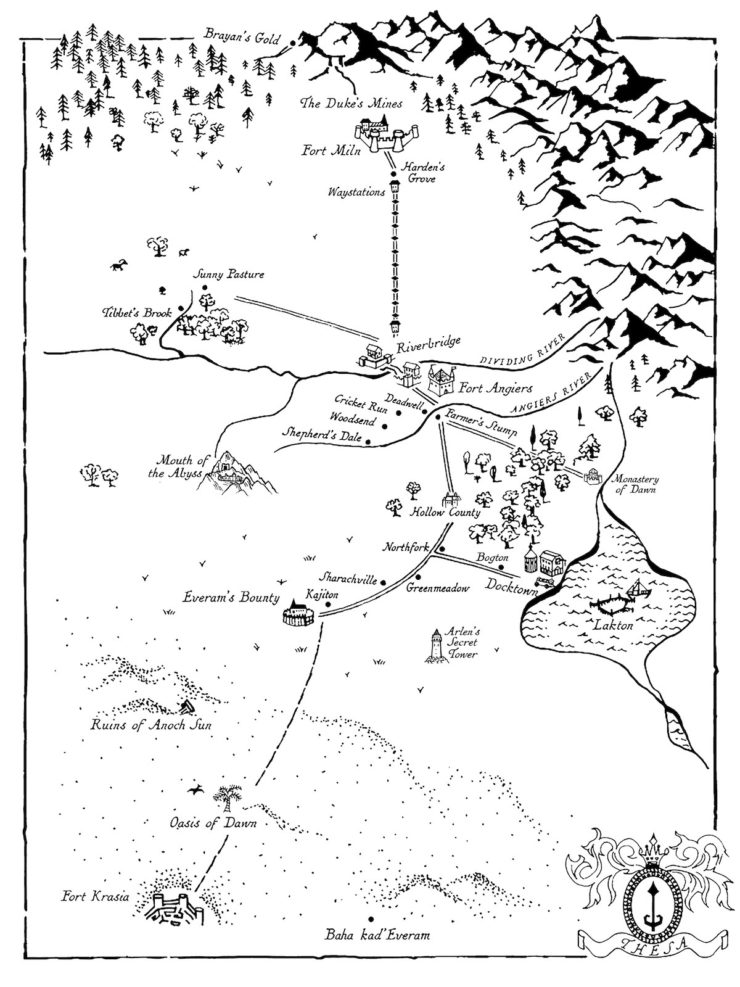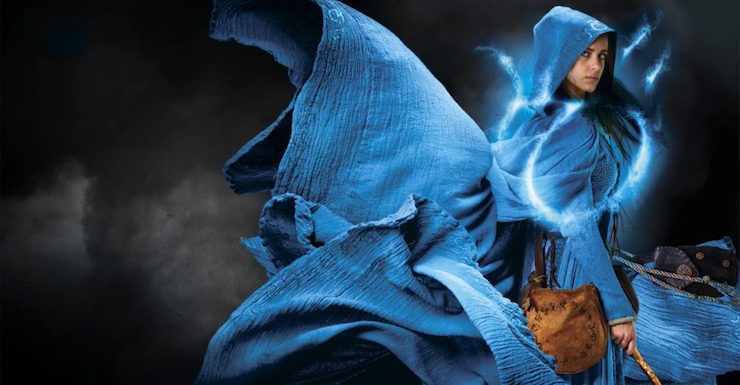As is the case with many fantasy authors, much of my worldbuilding and creative skill is rooted in and honed by years of playing Dungeons & Dragons. It started in 1984 when I laid claim to my brother’s AD&D hardback rulebooks and would sneak off grade school campus at lunchtime to visit White Plume Mountain in Greyhawk at my friend Russell’s house. In college I left modules behind and planned vast campaigns through the Forgotten Realms.
Some of you may recall in 2002, after their acquisition of TSR, Wizards of the Coast had a casting call of sorts, inviting worldbuilders young and old, amateur and pro, to submit their creations in a search for the next big fantasy realm to use as a setting for the new edition of D&D. It was American Idol for nerds.
What you probably did not know is that not only did I make a submission to that contest, but my entry was an early precursor to what would one day become the internationally bestselling Demon Cycle series. I called my realm The Core.
Needless to say, I did not win the competition, or even make it into the first round of finalists. Come to think of it, it was probably my first-ever professional rejection. This was still years before I had even a first draft of The Painted Man (which eventually became The Warded Man). In retrospect, I think it worked out for the best. The Core was too low magic for WotC, and I am glad I kept full creative control and got to explore the setting at my own pace. Now that “The Core” has gone on to spawn five novels, four novellas, and sell over two million books in 25 languages worldwide, I find I can live with the loss.
Still, it’s fascinating to see how much of the worldbuilding held up in the series as it is today. Have a look at my original proposal.
* * *
June 19, 2002
To Whom It May Concern,
Enclosed please find my idea submission for a new fantasy setting I refer to as The Core. My submission is a brief description of a setting I originally designed and intended for a novel, but one that I feel it adapts easily to role-playing and collectible card games, as well. I hope you like it.
Regards,
Peter V. Brett

(Click to Enlarge)
Fantasy Setting Proposal: The Core
Ethos Sentence: The Core is a setting in which demons (Corelings) share the world with humans, rising from the planet’s core each night and ravaging the land, only to flee back into the core to hide from the sun each morning.
Who are the heroes? The main heroes in The Core are known as Messengers. These are people who travel from one fortress-like city to the next, bringing correspondence and maintaining the last vestiges of contact between the scattered pockets of humanity that remain. Other heroes include Jongleurs and Herb Gatherers, who also tend to travel from place to place, and Warders, who live in all the cities and towns.
What do they do? Messengers are all trained by Warders (people who draw magical wards professionally), and are skilled at defensive magic. They are all armed and trained in combat, revered by commoners for their great daring, and by rulers for the invaluable information they provide. Jongleurs are traveling entertainers and storytellers who bring news and often service smaller communities (the poor man’s Messenger). Herb Gatherers are practiced in the healing arts and the medicinal uses of plants. Unlike Messengers, Jongleurs and Herb Gatherers rely as much on wit, guile, and the charity of others as they do on their warding skills for succor (sanctuary from demons) when traveling.
In addition to the obvious goals inherent in these classes, they all have another, grander goal, which is to collect and apply the knowledge, both of magic and of science, that was scattered/lost when the demons came, in hopes of freeing humanity from the Corelings and helping it regain something of its former glory.
Threats, Villains: The main threat to heroes in The Core comes from demons, also known as Corelings. These creatures most commonly come in four classes (Wind demons fly, Flame demons breathe fire, Water demons swim, and Rock demons are armored and massive), though there is room for infinite variation within these categories. All demons are inhumanly strong, armed with sharp claws and teeth, and armored with thick carapaces. They kill for the sheer pleasure of it, and greatly outnumber humans, now that most of human civilization is destroyed. Any living thing outside of a warded area at night is considered their prey.
Other ‘outside’ threats are of a more natural sort. The remaining animal life outside the warded areas has evolved over the years either into creatures with specialized hiding skills (like birds that burrow into the ground), or into abnormally large and aggressive variations of powerful animals that are able to defend themselves against demons, such as hunting cats, wolves, bears, etc. (though even these are considered prey by the Corelings).
‘Inside’ threats would come mostly from other humans, particularly rulers who, due to either greed or cowardice, are unwilling to work with heroes trying to improve quality of life for everyone.
Nature of magic: The only true magic in The Core exists in the demons, whose very nature is magical. All human magic is in the form of wards. These are static magical symbols, drawn or etched onto surfaces, which are able to turn the magic of the demons back on itself (feedback). Common wards can be defensive (preventing demons from entering an area) or offensive (causing a demon physical harm). In addition, rare and exotic wards, such as subversive wards (which force a demon to do a human’s bidding), or vampiric wards (which steal a demon’s energy and transfer it to a person) are possible. Any ‘magic items’ would simply be items with wards etched or painted onto them. Technically, anyone with a practiced hand can draw wards, but it takes a keen, educated mind to understand and apply them properly, as there are subtle variations in wards depending on context.
What’s different? In The Core, humans are virtual prisoners during the dark hours, and this affects every aspect of culture and life. In ages past, great wars were fought with the demons, with humans using powerful magic symbols and weapons to counter the Corelings’ greater strength. However, just as the humans seemed about to win once and for all, the Corelings stopped coming. The demons stayed away for centuries, until humans ceased to believe in them at all. Magic wards, which only worked against demons, became thought of as fantasy, and humans focused on science instead.
Then, without warning, the Corelings returned. Having multiplied over the eons, they destroyed many of the major cities and centers of learning. Humans tried to reclaim the magics of old, but they were only able to salvage a little; enough for a few, isolated pockets of humanity to keep the demons at bay, hiding behind wards each night as the demons rule what is left of the world. Because of this, humans cannot safely travel further than they can in one day’s sunlight without finding a place of succor.
The advantage of this setting is that there could be thousands of separate, isolated communities throughout the world, each with entirely different cultures/flavors, and each of which can have the use of different wards and methods of dealing with the demons (up to and including unholy alliances with them). Even if heroes manage to change the quality of life for people in one area, there are still endless possibilities for adventure elsewhere. In addition, in the wild lands between cities where demons rule, there stand the ruins of the great cities of that did not withstand the demons’ initial onslaught, ripe for exploration, and filled with wonders not seen in centuries.
 Peter V. Brett is the internationally bestselling author of the Demon Cycle series, which has sold over two million copies in twenty-five languages worldwide. His novels are The Warded Man, The Desert Spear, The Daylight War, The Skull Throne and The Core. He spends too much time on the Internet, but occasionally unplugs to practice kickboxing and dad fu. He lives in Manhattan.
Peter V. Brett is the internationally bestselling author of the Demon Cycle series, which has sold over two million copies in twenty-five languages worldwide. His novels are The Warded Man, The Desert Spear, The Daylight War, The Skull Throne and The Core. He spends too much time on the Internet, but occasionally unplugs to practice kickboxing and dad fu. He lives in Manhattan.










